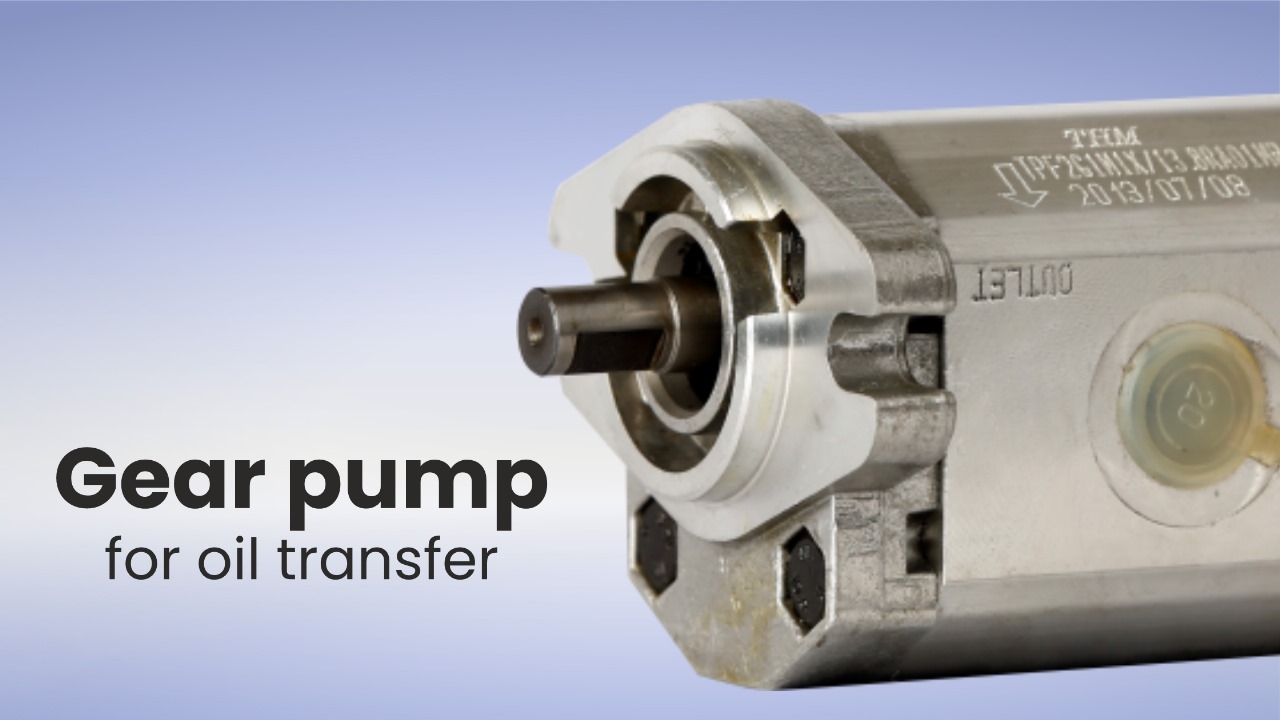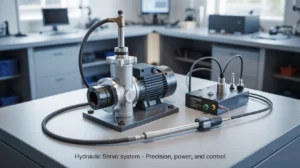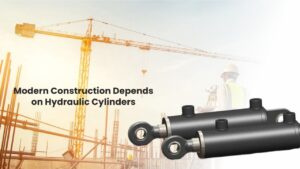The choice of gear pump for oil transfer is critical in achieving efficiency, durability, and reliability in industrial systems. You have decided to purchase gear pump in India or you have decided to compare the varieties of pumps, knowing the way these pumps operate and the factors that affect the functioning of the pump can enable you make the right investment.
We will step by step as we consider in this guide the type of pump to be used, the type of maintenance required, etc. so that you will be assured of the type of high pressure gear pump to be used based on your operational requirements.
Step 1: Understand the Function of a Gear Pump
A gear pump is provided by interlocking gears in order to pump fluid effectively. Hydraulic systems, oil transfer, lubrication, and industrial processes are some of the common areas of application of these pumps.
Two main types of gear pumps:
1. External Gear Pump
This is suitable in oil transfers, hydraulic systems and it has high pressure and accurate flow control.
Model codes: THM TPF2G3-M1X/046RA-01MR, THM TPF2G3-M1X/052RA-01MR, THM TPF2G3-M1X/063 RA-01MR, THM TPF2G3-M1X/071RA-01MR, CB-B63, CBB100, CBB125, F11-005-MB-CV-K, F11-005-MB-CV-K-000-0000-0T, F11-005-S, F11-010-MB-CV-K-000-0000-00, F11-010-SB-XS-K-285-MUVR-P0, F11-014-SB-WV-X-429-MUVR-P0, F11-019-SB-XS-X-298-MUVR-B0
2. Internal Gear Pump
It is the best for low-viscid fluids and where it has to be used smoothly and without noise.
Model codes: DIGP-3-3-125-125-OIT/R-VPC, DIGP-3-3-80-80-OIT/R-VPC, DIGP21-25-20-01T/R-VPC, DIGP21-40-13-01T/R-VPC, DIGP21-50-08-01T/R VPC, DIGP22-50-32-01T/R-VPC, DIGP22-63-40-01T/R-VPC, DIGP32-125-63-01T/R VPC, Q-IGPE2-080-S10, Q-IGPE2-100-S10, Q-IGPE2-125-S10
These two types have the capability of being low noise gear pumps that could be used in small machineries and in the industrial installation.
Step 2: Match the Pump to Your Application
You should make sure before purchasing THM gear pump, what your operation is like. As an example, the transfer of oil needs to have a durable pump that will run continuously and not easily get worn out.
Applications to Consider:
- Hydraulic Gear pump – hydraulic machinery and hydraulic lifts.
- Oil transfer gear pump – moves lubrication oil, diesel etc.
- Compact gear pump machine – this is a compact gear pump, which aims at small space installations.
Step 3: Evaluate Pump Materials and Build Quality
The performance and the life of a gear pump is set by the material.
Common Material Options:
- Cast Iron: It is cost effective and it is long lasting in general use.
- Stainless Steel: Oil and chemical transfer, anti-corrosive.
- Bronze or Aluminium: Lightweight and suitable in portable or small size pumps.
The sourcing of an industrial gear pump should be done with the supplier always looking at the type of material they have that matches with your type of fluid.
Step 4: Check Pressure and Flow Specifications
Knowing performance ratings can make you be sure that the pump will suit your requirements of operation.
- Flow rate: This is used to determine the amount of liquid that is moved within a minute.
- Pressure Rating: This shows the amount of pressure that the pump is capable of operating safely.
- Viscosity Range: Makes the pump confident of the ability to work with either a thick or thin fluid.
A gear pump with a very high pressure is suited to tasks that require it such as hydraulic presses or oil circulation systems.
Step 5: Compare Gear Pump vs Piston Pump
Both serve hydraulic applications but differ in design and performance.
| Feature | Gear Pump | Piston Pump |
| Cost | More affordable | More expensive |
| Flow Consistency | Steady and smooth | Adjustable |
| Maintenance | Easier | Complex |
| Pressure | Moderate to high | Very high |
| Application | Oil transfer, machinery | Heavy duty hydraulics |
When you are interested in the transfer of oil and continuous flow, a THM Huade gear pump can be a better choice.
Step 6: Noise and Efficiency Factors
Low noise gear pump improves work conditions and reduce vibration. Search towards precision machined gears and well balanced shafts which minimize the friction and noise caused during operation.
Tip: A small sized pump design can be used to assist in saving energy as well as space in equipment.
Step 7: Maintenance and Longevity
- Regular maintenance increases the life of your pump.
- Gear Pump Maintenance Tips in hydraulic industry
- Conduct periodic inspections on poor condition seals or leaks.
- Keep the oil in a clean condition that is not contaminated.
- Continued parts greased.
- Change worn out gears with time.
These are some of the maintenance steps that can greatly minimize downtime and enhance performance.
Step 8: Select the appropriate Supplier
Locating the appropriate gear pump manufacturers either locally in my area or online is significant as well as the product itself.
What to Look for in a Supplier:
- Proven industry experience.
- After sales service and quality certification.
- Provision of spares and accessories.
One of the established and reliable companies in the supply of industrial gear pumps in India is THM Hydraulics which specializes in the supply of quality and performance tested gear pumps in several industries. You can always count on THM to provide solutions to your need of either a compact gear pump used in machinery or a high pressure gear pump.
Step 9: Last Test and Setup
When the system is installed, you should configure it to ensure the smooth operation of the system. Check flow rate, check noise also and make sure that all fittings are leak free.
Conclusion: Make the Right Choice for Your Gear Pump Needs
The selection of the proper gear pump to use in the oil transfer requires measuring the performance, material and the quality of the supplier. An optimally chosen pump will enhance efficiency, reduce time outage and a long life cycle.
To have the help of professionals and real hydraulic solutions, Call today our team expert, your reliable partner in gear pump and hydraulic systems in India.
FAQ’s of Gear Pumps
Q1. What are the factors considered for the selection of a pump?
The choice of the pump is based on the rate of flow, pressure, fluid viscosity, temperature, and power needs. These guarantee efficient and reliable work of the gear pump of the oil transfer.
Q2. How to select a gear pump?
Select a gear pump depending on the type of fluid to be pumped, operating pressure, minimum flow rate and suitability to your hydraulic system. The correct sizing is a guarantee of improved performance and service life.
Q3. When selecting a gear pump for an application, some of the considerations are?
The material of the pump, conditions of suction, speed, and type of sealing should be evaluated. These are parameters that influence the maintenance and performance of the gear pump to transfer oil.
Q4. What are the characteristics of a gear pump?
Gear pump has constant flow, compact, and high-pressure. Hydraulic systems and oil transfer applications are some of the common places where it is used because of its reliability and efficiency.
Q5. How many types of gear pumps are there?
It is primarily of two types, namely, external gear pumps and internal gear pumps. The two are applied on the basis of the pressure and flow requirements of the application.
Q6. How to choose gear size?
The size of the gears is based on the required pressure and flow rate. Larger gears can transfer larger volumes though will run at slower speeds which impacts on the efficiency of your gear pump in transferring oil.
Q7. What is the lifespan of a gear pump?
A properly maintained gear pump should last between 5 and 10 years or longer, provided that the conditions under which it is operated are appropriate. Oil inspections and changing the seal every so often increase its lifespan.



